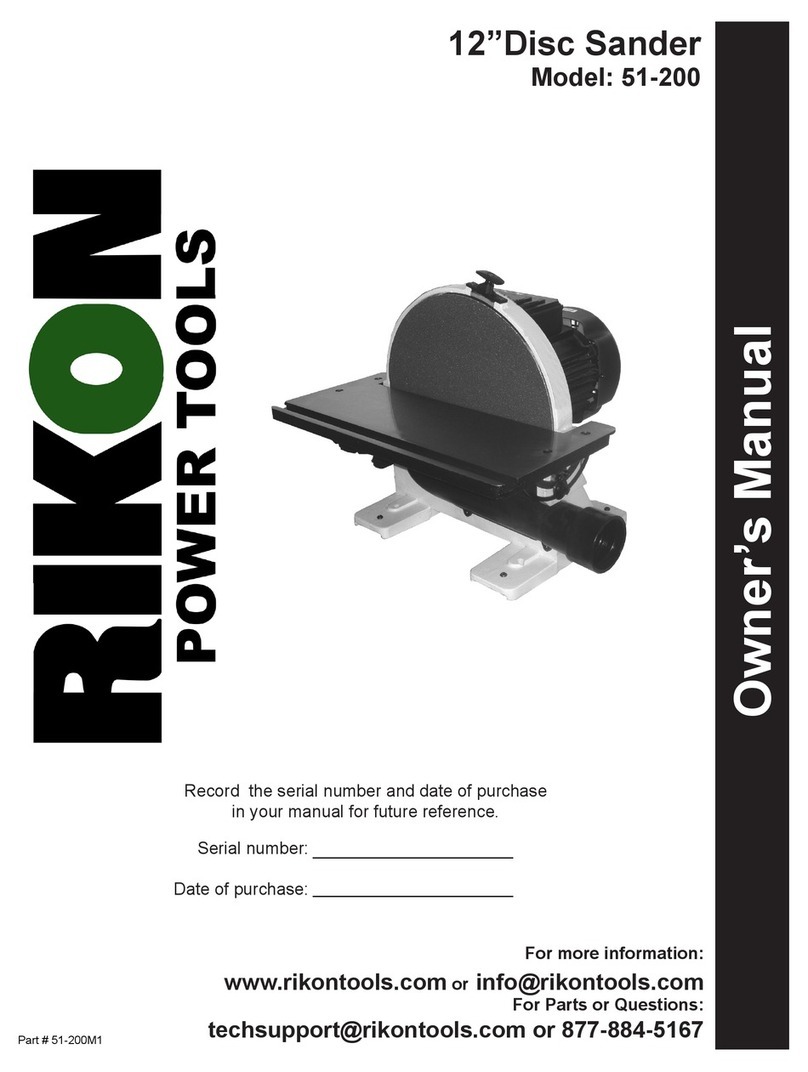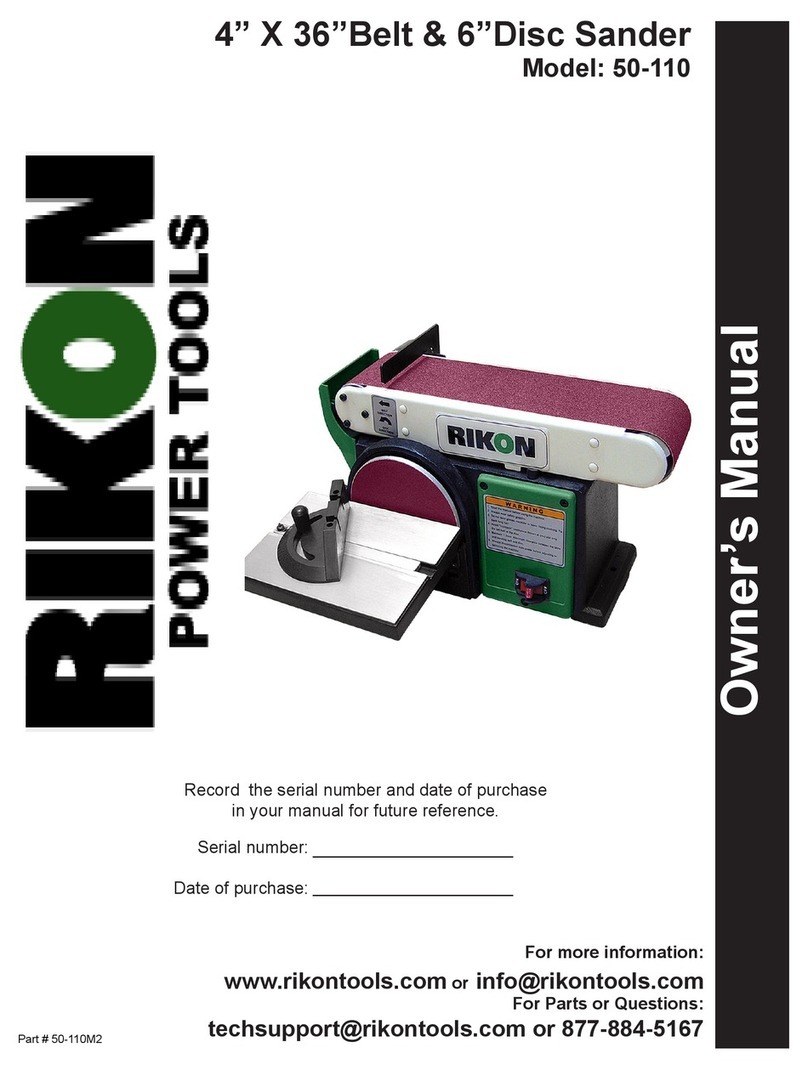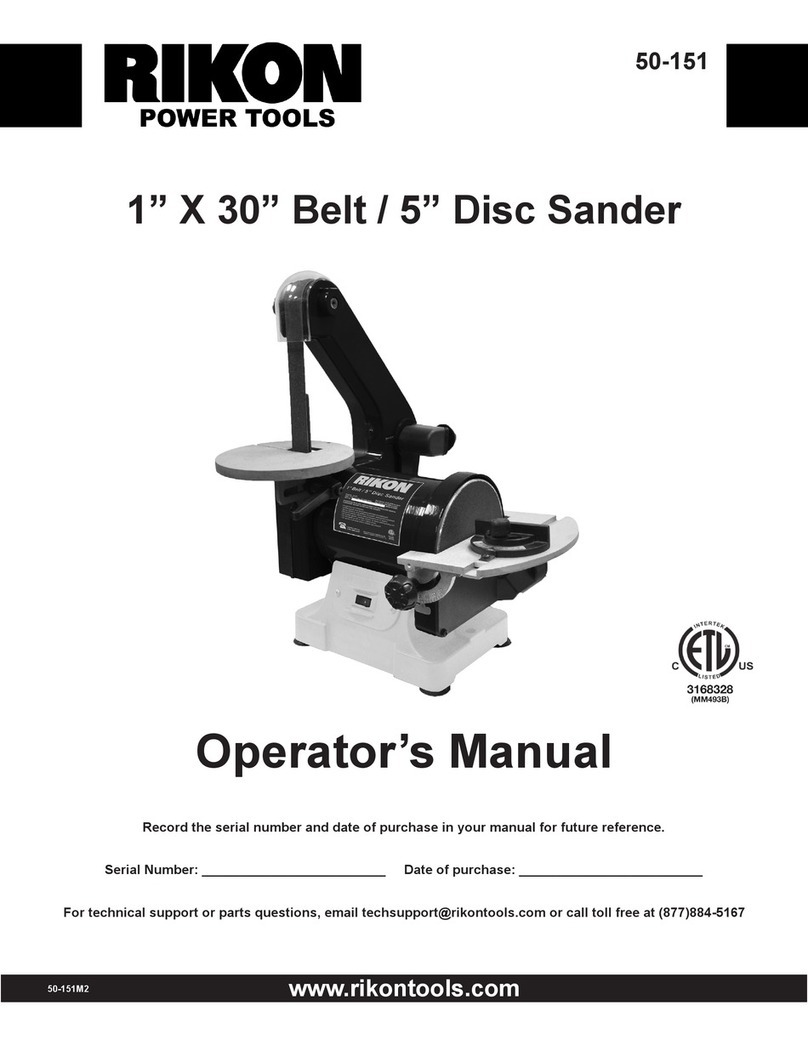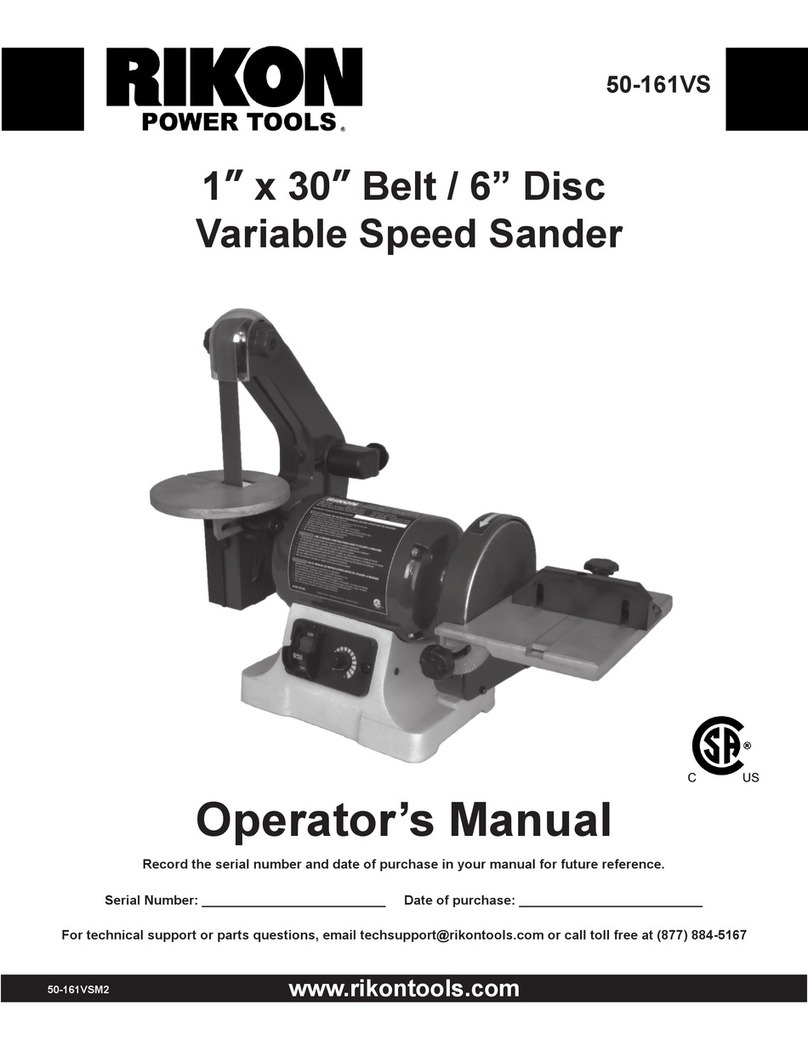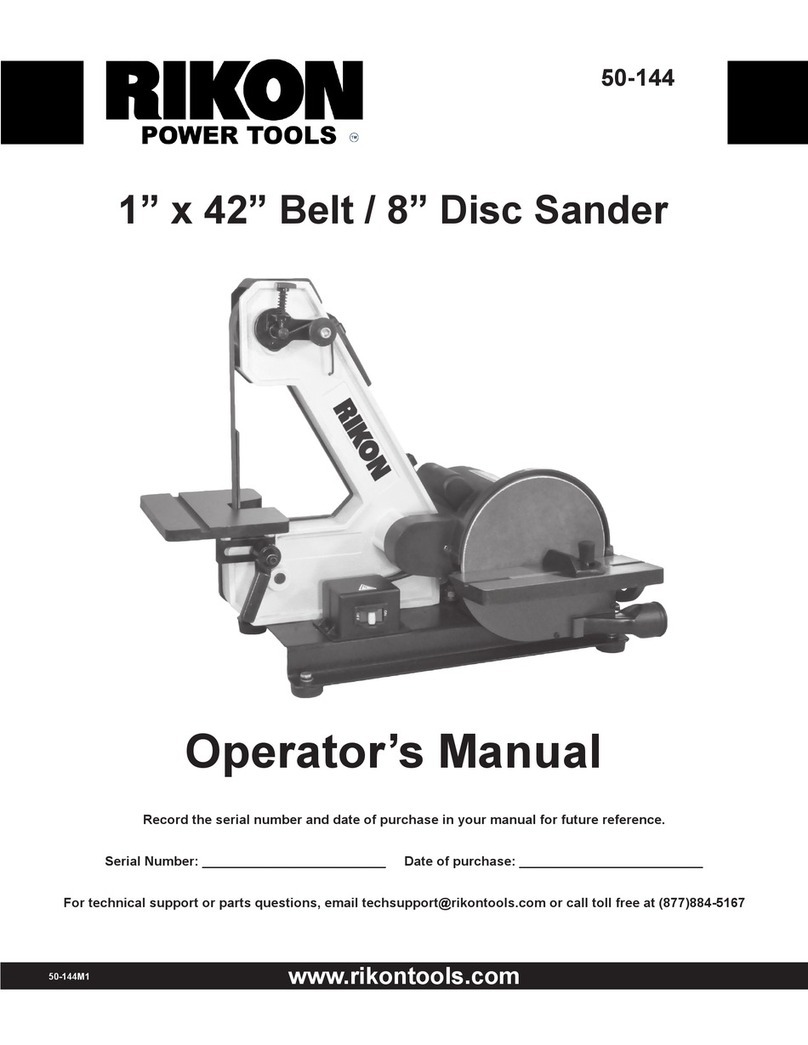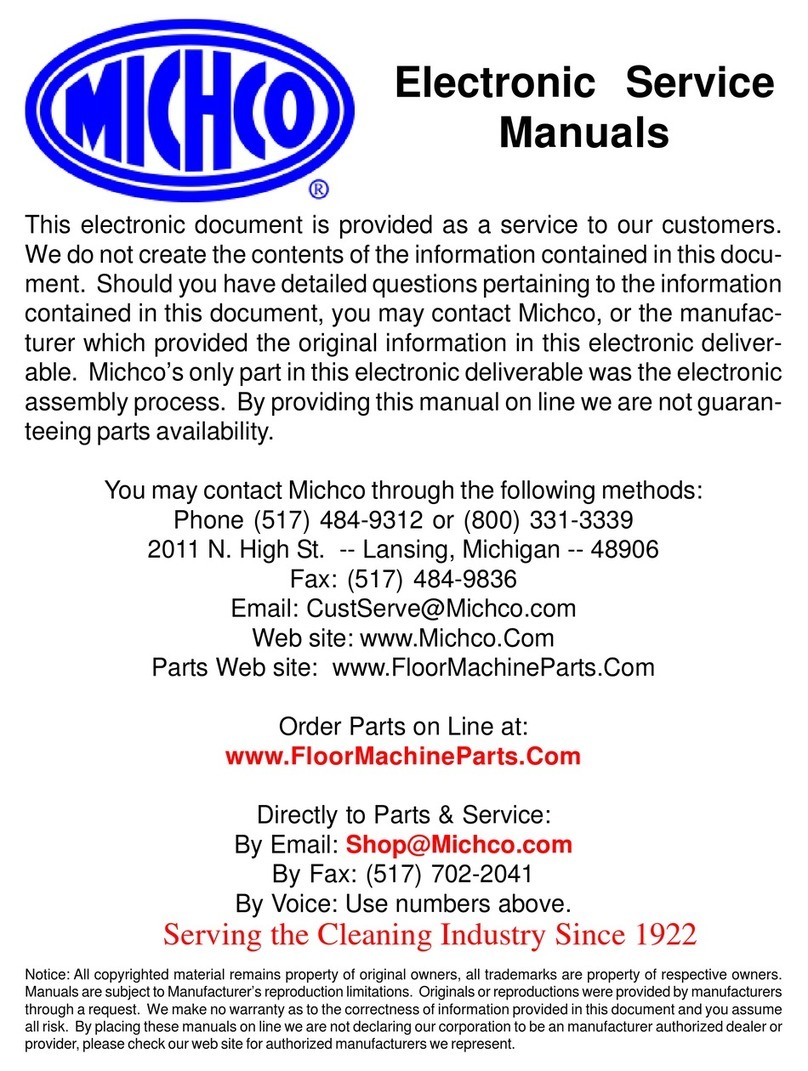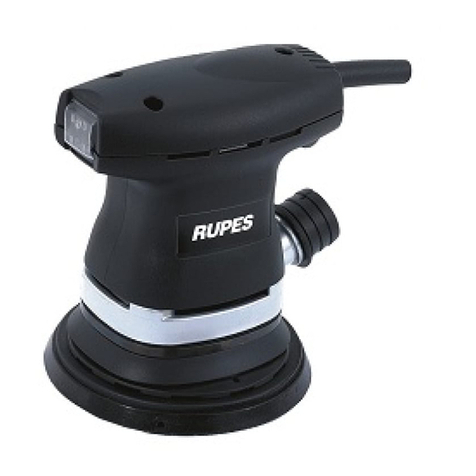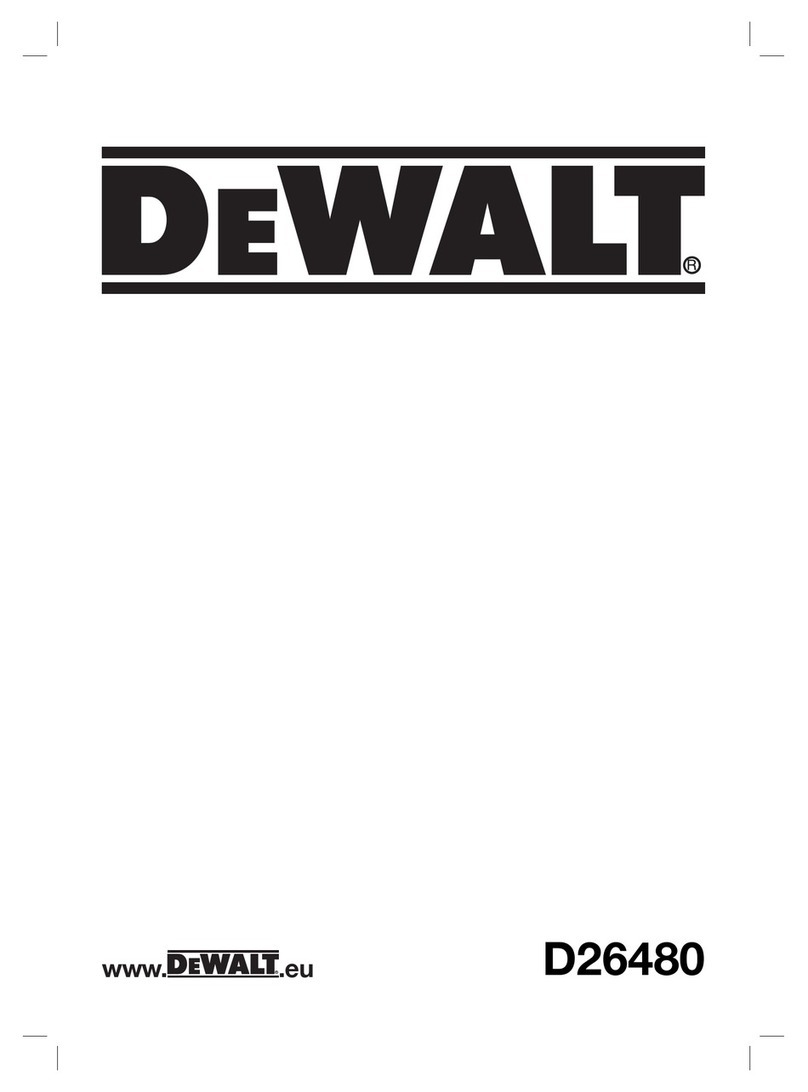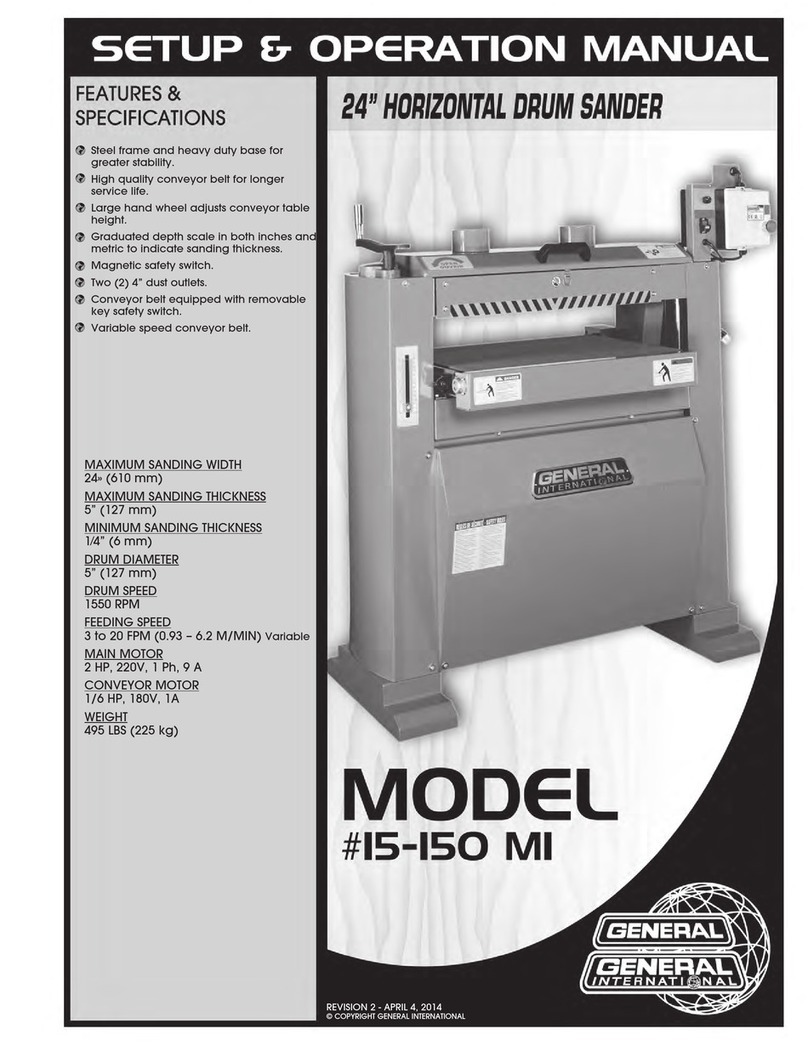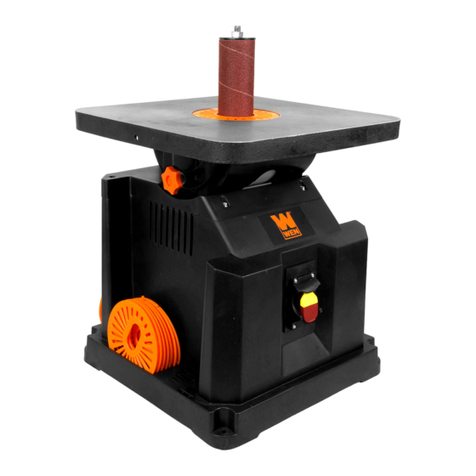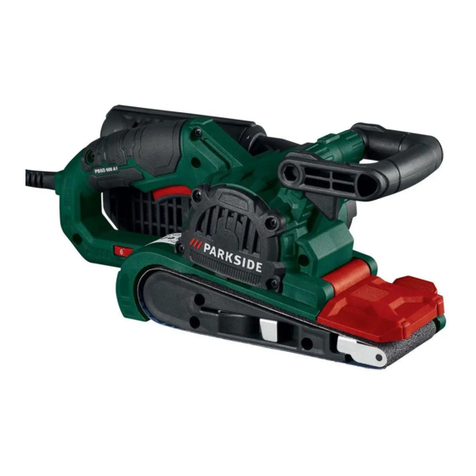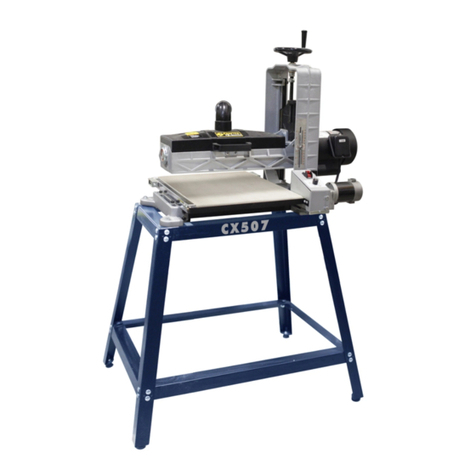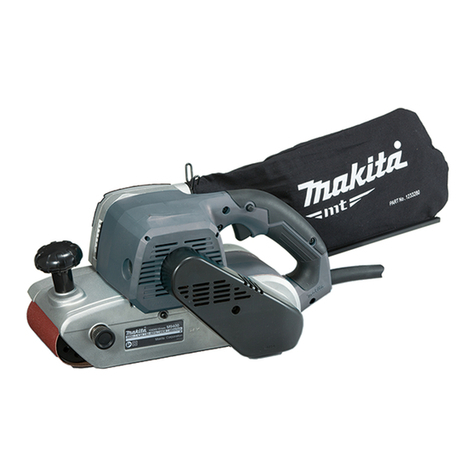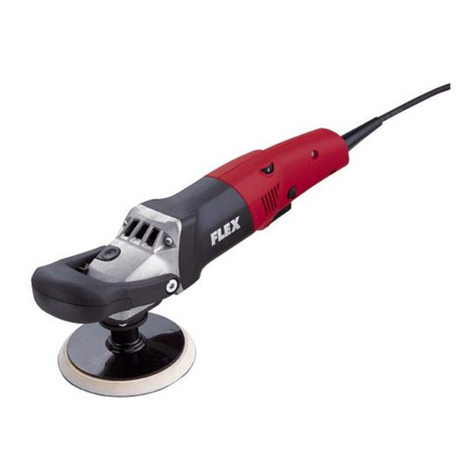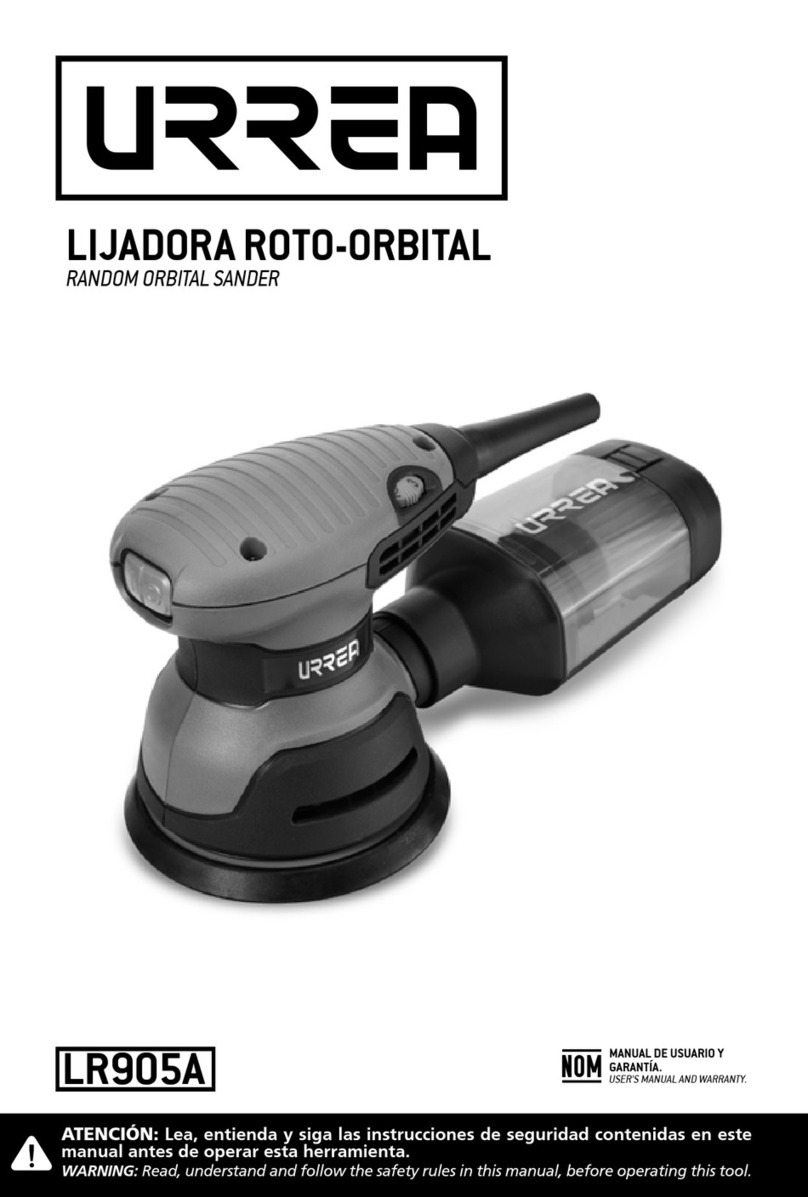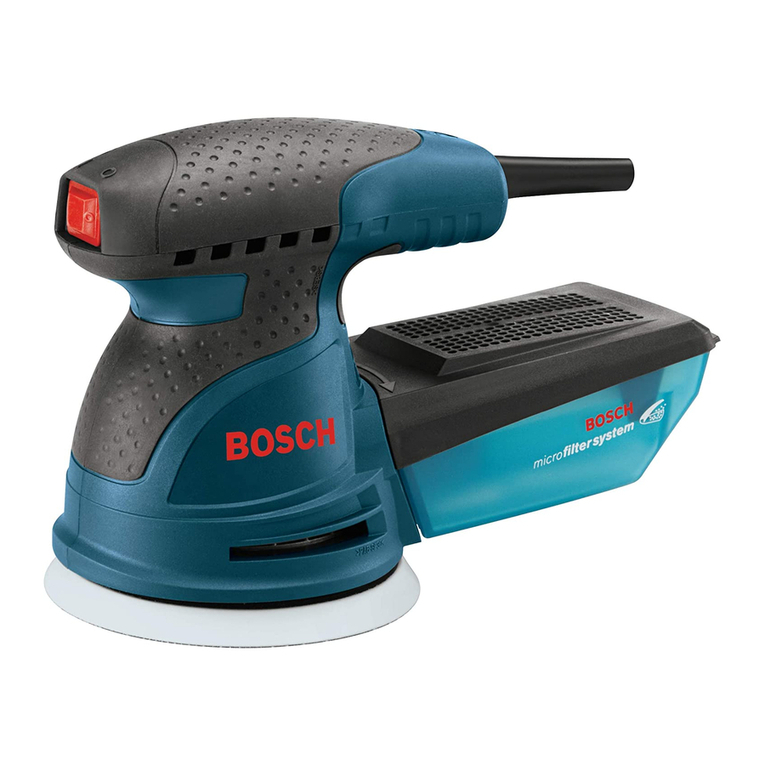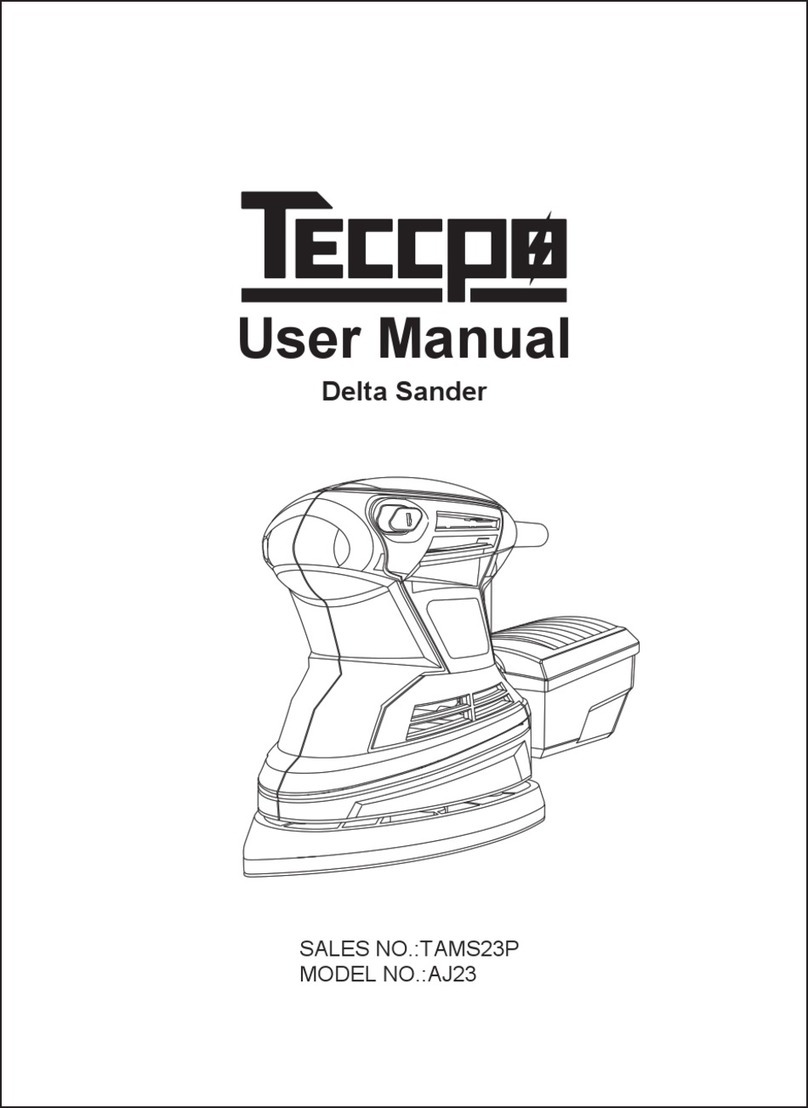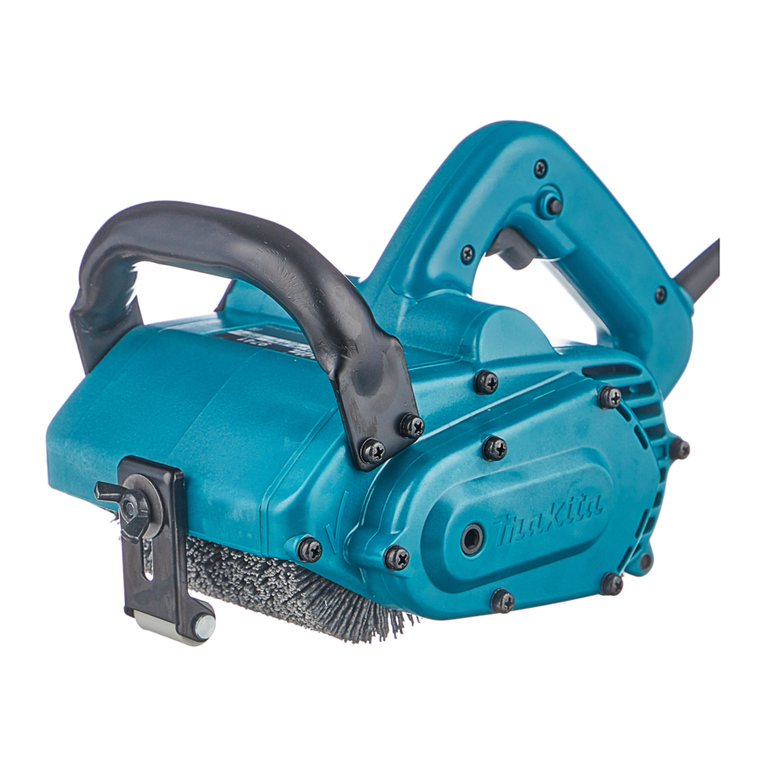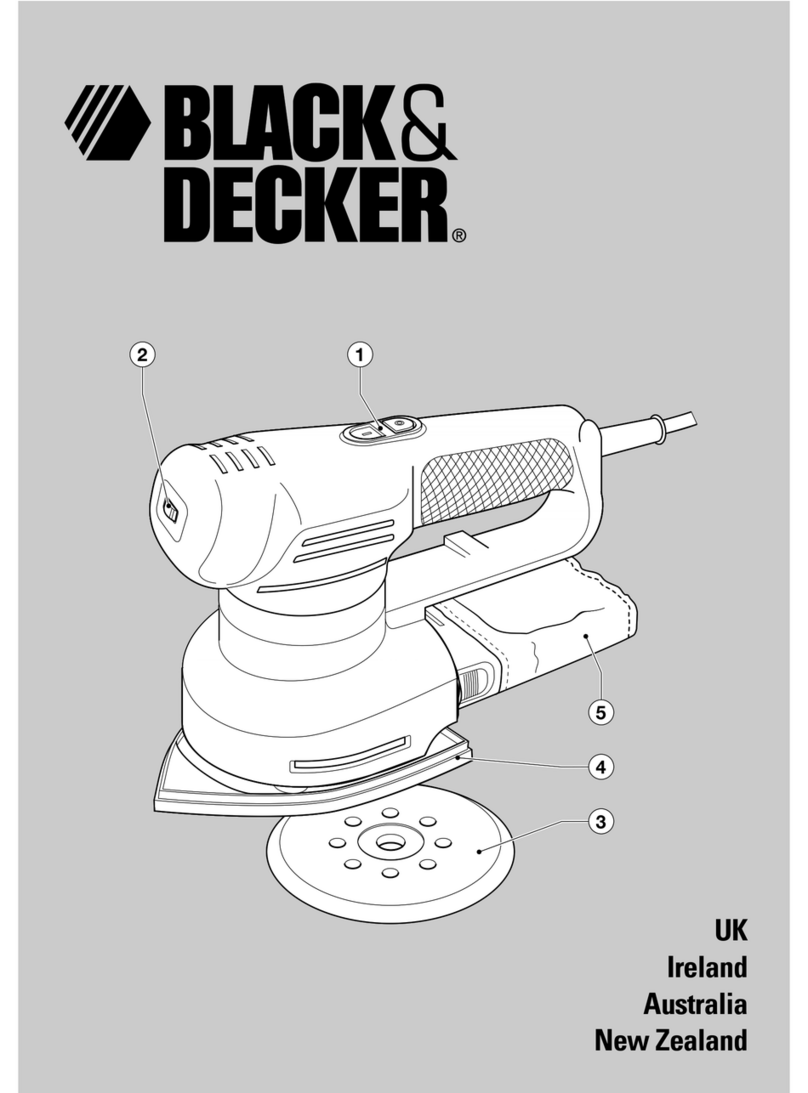Rikon Power Tools 50-120 User manual

6” x 48” Belt & 10” Disc Sander
www.rikontools.com
50-120M5
Operator’s Manual
Record the serial number and date of purchase in your manual for future reference.
The serial number can be found on the specication label on the rear of your machine.
Serial Number: _________________________ Date of purchase: _________________________
For technical support or parts questions, email [email protected] or call toll free at (877) 884-5167
50-120

2
TABLE OF CONTENTS
SPECIFICATIONS #50-120
Specications ................................................................................................................................2
Safety Warnings..................................................................................................................................2-6
Sander Safety Rules ........................................................................................................................6
Contents of Package ................................................................................................................................7
Electrical Requirements.................................................................................................................5&18
Assembly ...........................................................................................................................8-10
Operation..................................................................................................................11&12
Maintenance ...................................................................................................................................13
Changing the Motor Belt.......................................................................................................................13
Parts Diagram ..............................................................................................................................14 & 16
Parts List..................................................................................................................................15 & 17
Trouble Shooting....................................................................................................................................18
Wiring Diagram.................................................................................................................................18
Accessories ..................................................................................................................................... 19
Warranty ..............................................................................................................................................19
California Proposition 65 Warning
NOTE: The specications, photographs, drawings and information in this manual represent the current model when the manual
was prepared. Changes and improvements may be made at any time, with no obligation on the part of Rikon Power Tools, Inc.
to modify previously delivered units. Reasonable care has been taken to ensure that the information in this manual is correct, to
provide you with the guidelines for the proper safety, assembly and operation of this machine.
Motor ................................................................................................................. 3/4 HP
Amps ..................................................................................................................... 10 A
Volts, Hertz .............................................................................................. 110 V, 60 Hz
Belt Size ...........................................................................................................6” x 48”
Belt Speed (no load) .................................................................................2,030 SFPM
Belt Table Tilt ................................................................................................... 0° - 90°
Belt Fence (LxH) ................................................................................... 7-7/8” x 4-3/4”
Disc Size (PSA) Diameter ...................................................................................... 10”
Disc Speed (no load) ................................................................................. 1,720 RPM
Disc Table Size (LxW) ....................................................................................... 4” x 8”
Disc Table Tilt ................................................................................................... 0° - 45°
Miter Gauge ‘T’ Slot ..................................................................................... 3/8” x 3/4”
Dust Port (1) ............................................................................... 2-1/2” OD, 2-5/16” ID
Overall Size (LxWxH) ............................................................... 28-1/4” x 17-1/4” x 16”
Base Size (LxW) ...................................................................................... 22” x 10-1/4”
Net Weight ........................................................................................................ 92 lbs.
WARNING: Some dust created by power sanding, sawing, grinding, drilling, and other construction activities contains
chemicals known to the State of California to cause cancer and birth defects or other reproductive harm. Your risk from
exposure to these chemicals varies, depending on how often you do this type of work. To reduce your exposure, work in
a well-ventilated area and with approved safety equipment, such as dust masks that are
specially designed to lter out microscopic particles.
For more information go to www.P65Warnings.ca.gov/wood.

SAFETY SYMBOLS
3
SAFETY SYMBOLS
IMPORTANT! Safety is the single most important consideration in the operation of this equipment. The following
instructions must be followed at all times. Failure to follow all instructions listed below may result in electric shock,
re, and/or serious personal injury.
There are certain applications for which this tool was designed. We strongly recommend that this tool not be modied
and/or used for any other application other than that for which it was designed. If you have any questions about its
application, do not use the tool until you have contacted us and we have advised you.
GENERAL SAFETY
KNOW YOUR POWER TOOL. Read the owner’s manual
carefully. Learn the tool’s applications, work capabilities,
and its specic potential hazards.
BEFORE USING YOUR MACHINE
To avoid serious injury and damage to the tool, read and
follow all of the Safety and Operating Instructions before
operating the machine.
1. Some dust created by using power tools
contains chemicals known to the State of California to
cause cancer, birth defects, or other reproductive harm.
Some examples of these chemicals are:
• Lead from lead-based paints.
• Crystalline silica from bricks, cement, and other
• masonry products.
• Arsenic and chromium from chemically treated lumber.
Your risk from these exposures varies, depending on how
often you do this type of work. To reduce your exposure to
these chemicals: work in a well ventilated area and work
with approved safety equipment, such as those dust masks
that are specially designed to lter out microscopic
particles.
2. READ the entire Owner’s Manual. LEARN how to use
the tool for its intended applications.
3. GROUND ALL TOOLS. If the tool is supplied with a 3
prong plug, it must be plugged into a 3-contact electrical
receptacle. The 3rd prong is used to ground the tool and
provide protection against accidental electric shock. DO
NOT remove the 3rd prong. See Grounding Instructions
on the following pages.
4. AVOID A DANGEROUS WORKING ENVIRONMENT.
DO NOT use electrical tools in a damp environment or
expose them to rain.
5. DO NOT use electrical tools in the presence of
ammable liquids or gases.
6. ALWAYS keep the work area clean, well lit, and
organized. DO NOT work in an environment with oor
surfaces that are slippery from debris, grease, and wax.
7. KEEP VISITORS AND CHILDREN AWAY. DO NOT
permit people to be in the immediate work area,
especially when the electrical tool is operating.
8. DO NOT FORCE THE TOOL to perform an operation
for which it was not designed. It will do a safer and
higher quality job by only performing operations for
which the tool was intended.
9. WEAR PROPER CLOTHING. DO NOT wear loose
clothing, gloves, neckties, or jewelry. These items can
get caught in the machine during operations and pull the
operator into the moving parts. The user must wear a
protective cover on their hair, if the hair is long, to
prevent it from contacting any moving parts.
10. CHILDPROOF THE WORKSHOP AREA by
removing switch keys, unplugging tools from the
electrical receptacles, and using padlocks.
11. ALWAYS UNPLUG THE TOOL FROM THE
ELECTRICAL RECEPTACLE when making adjust-
ments, changing parts or performing any maintenance.
SAFETY ALERT SYMBOL: Indicates DANGER, WARNING, or CAUTION. This symbol may be used
in conjunction with other symbols or pictographs.
Indicates an imminently hazardous situation, which, if not avoided, could result in death or
serious injury.
Indicates a potentially hazardous situation, which, if not avoided, could result in death or serious
injury.
Indicates a potentially hazardous situation, which, if not avoided, could result in minor or
moderate injury.
NOTICE: Shown without Safety Alert Symbol indicates a situation that may result in property damage.

4
SAFETY INSTRUCTIONS
16. NEVER LEAVE A RUNNING TOOL UNATTENDED.
Turn the power switch to the “OFF” position. DO NOT
leave the tool until it has come to a complete stop.
17. DO NOT STAND ON A TOOL. Serious injury could
result if the tool tips over, or you accidentally contact the
tool.
18. DO NOT store anything above or near the tool where
anyone might try to stand on the tool to reach it.
19. MAINTAIN YOUR BALANCE. DO NOT extend
yourself over the tool. Wear oil resistant rubber soled
shoes. Keep oor clear of debris, grease, and wax.
20. MAINTAIN TOOLS WITH CARE. Always keep tools
clean and in good working order. Keep all blades and tool
bits sharp, dress grinding wheels and change other
abrasive accessories when worn.
21. EACH AND EVERY TIME, CHECK FOR DAMAGED
PARTS PRIOR TO USING THE TOOL. Carefully check
all guards to see that they operate properly, are not dam-
aged, and perform their intended functions. Check for
alignment, binding or breaking of moving parts. A guard
or other part that is damaged should be immediately
repaired or replaced.
22. DO NOT OPERATE TOOL WHILE TIRED, OR
UNDER THE INFLUENCE OF DRUGS, MEDICATION
OR ALCOHOL.
23. SECURE ALL WORK. Use clamps or jigs to secure
the work piece. This is safer than attempting to hold the
work piece with your hands.
24. STAY ALERT, WATCH WHAT YOU ARE DOING,
AND USE COMMON SENSE WHEN OPERATING A
POWER TOOL.
A moment of inattention while operating power tools may
result in serious personal injury.
26. USE A PROPER EXTENSION CORD IN GOOD
CONDITION. When using an extension cord, be sure to
use one heavy enough to carry the current your product
will draw. The table on the following page shows the cor-
rect size to use depending on cord length and nameplate
amperage rating. If in doubt, use the next heavier gauge.
The smaller the gauge number, the larger diameter of the
extension cord. If in doubt of the proper size of an exten-
sion cord, use a shorter and thicker cord. An undersized
cord will cause a drop in line voltage resulting in a loss of
power and overheating.
USE ONLY A 3-WIRE EXTENSION CORD THAT HAS
A 3-PRONG GROUNDING PLUG AND A 3-POLE
RECEPTACLE THAT ACCEPTS THE TOOL’S PLUG.
27. ADDITIONAL INFORMATION regarding the safe and
proper operation of this product is available from:
• Power Tool Institute
1300 Summer Avenue
Cleveland, OH 44115-2851
www.powertoolinstitute.org
• National Safety Council
1121 Spring Lake Drive
Itasca, IL 60143-3201
www.nsc.org
• American National Standards Institute
25 West 43rd Street, 4th Floor
New York, NY 10036
www.ansi.org
• ANSI 01.1 Safety Requirements for
Woodworking Machines and the
U.S. Department of Labor regulations
www.osha.gov
28. SAVE THESE INSTRUCTIONS. Refer to them
frequently and use them to instruct others.
25. ALWAYS WEAR A DUST MASK TO PREVENT
INHALING DANGEROUS DUST OR AIRBORNE
PARTICLES, including wood dust, crystalline silica dust
and asbestos dust. Direct particles away from face and
body. Always operate tool in well ventilated area and
provide for proper dust removal. Use dust collection
system wherever possible. Exposure to the dust may
cause serious and permanent respiratory or other injury,
including silicosis (a serious lung disease), cancer, and
death. Avoid breathing the dust, and avoid prolonged
contact with dust. Allowing dust to get into your mouth
or eyes, or lay on your skin may promote absorption of
harmful material. Always use properly tting NIOSH/OSHA
approved respiratory protection appropriate for the dust
exposure, and wash exposed areas with soap and water.
12. KEEP PROTECTIVE GUARDS IN PLACE AND IN
WORKING ORDER.
13. AVOID ACCIDENTAL STARTING. Make sure that
the power switch is in the “OFF” position before plugging
in the power cord to the electrical receptacle.
14. REMOVE ALL MAINTENANCE TOOLS from the
immediate area prior to turning “ON” the machine.
15. USE ONLY RECOMMENDED ACCESSORIES. Use
of incorrect or improper accessories could cause serious
injury to the operator and cause damage to the tool. If in
doubt, check the instruction manual that comes with that
particular accessory.

5
SAFETY INSTRUCTIONS
THE USE OF AN EXTENSION CORD
WITH THIS MACHINE IS NOT RECOMMENDED. For
best power and safety, plug the machine directly into a
dedicated, grounded electrical outlet that is within the
supplied cord length of the machine.
If an extension cord needs to be used, it should only be
for a limited operation of the machine. The extension
cord should be as short as possible in length, and have
a minimum gauge size of 14AWG.
Check extension cords before each
use. If damaged replace immediately. Never use a tool
with a damaged cord, since touching the damaged
area could cause electrical shock, resulting in serious
injury.
Use a proper extension cord. Only use cords listed by
Underwriters Laboratories (UL). Other extension cords can
cause a drop in line voltage, resulting in a loss of power
and overheating of tool. When operating a power tool out-
doors, use an outdoor extension cord marked “W-A” or “W”.
These cords are rated for outdoor use and reduce the risk
of electric shock.
DO NOT MODIFY ANY PLUG. If it will not t the electrical
receptacle, have the proper electrical receptacle installed
by a qualied electrician.
IMPROPER ELECTRICAL CONNECTION of the
equipment grounding conductor can result in risk of
electric shock. The conductor with the green insulation
(with or without yellow stripes) is the equipment ground-
ing conductor. DO NOT connect the equipment grounding
conductor to a live terminal if repair or replacement
of the electric cord or plug is necessary.
CHECK with a qualied electrician or service personnel if
you do not completely understand the grounding
instructions, or if you are not sure the tool is properly
grounded when installing or replacing a plug.
USE ONLY A 3-WIRE EXTENSION CORD THAT HAS
THE PROPER TYPE OF A 3-PRONG GROUNDING PLUG
THAT MATCHES THE MACHINE’S 3-PRONG PLUG AND
ALSO THE 3-POLE RECEPTACLE THAT ACCEPTS THE
TOOL’S PLUG. *
REPLACE A DAMAGED OR WORN CORD IMMEDIATELY.
This tool is intended for use on a circuit that has an
electrical receptacle as shown in FIGURE A. It shows a
3-wire electrical plug and electrical receptacle that has a
grounding conductor. If a properly grounded electrical
receptacle is not available, an adapter as shown in
FIGURE B can be used to temporarily connect this plug to
a 2-contact ungrounded receptacle. The adapter has a rigid
lug extending from it that MUST be connected to a perma-
nent earth ground, such as a properly grounded receptacle
box. THIS ADAPTER IS PROHIBITED IN CANADA.
FIGURE C shows the type of the 220V, 3-wire electrical
plug and receptacle that has a grounding conductor that is
required if the motor wiring is changed.
IN THE EVENT OF A MALFUNCTION OR BREAKDOWN,
grounding provides the path of least resistance for electric
current and reduces the risk of electric shock. This tool
is equipped with an electric cord that has an equipment
grounding conductor and requires a grounding plug (not
included). The plug MUST be plugged into a matching elec-
trical receptacle that is properly installed and grounded in
accordance with ALL local codes and ordinances.
THIS TOOL MUST BE GROUNDED
WHILE IN USE TO PROTECT THE OPERATOR FROM
ELECTRIC SHOCK.
EXTENSION CORDS
Keep the extension cord clear of
the working area. Position the cord so that it will not
get caught on lumber, tools or other obstructions while
you are working with your power tool.
* Canadian electrical codes require extension cords
to be certied SJT type or better.
** The use of an adapter in Canada is not acceptable.
FIG. B
FIG. A
ELECTRICAL SAFETY
Sample of 220 volt plug
if motor wiring is changed.
FIG. C
COVER
RAILS
Consult a qualied
electrician if the
distance of the
machine from the
electrical panel is
greater than 30 feet.

6
SAFETY INSTRUCTIONS
1. Do not operate this machine until you have read all of the following instructions.
2. Do not attempt to operate this machine until it is completely assembled.
3. Do not turn ON this machine if any pieces are damaged or missing.
4. This machine must be properly grounded.
5. If you are not familiar with the operation of the machine, obtain assistance from a qualied person.
6. This machine MUST be rmly mounted to a at and secure work surface or stand.
7. Always wear ANSI approved protective eye wear prior to operating this machine.
8. Always wear a dust mask and use adequate dust collection and proper ventilation. This machine can
produce harmful particles while sanding or bung certain types of woods, metals or other materials.
9. Do not wear loose clothing or jewelry when operating this machine. Keep long hair tied back.
10. Always make sure the power switch is in the OFF position prior to plugging in the machine.
11. Always make sure the power switch is in the OFF position when doing any assembly or setup operation.
12. Make sure all safety guards and hardware are securely tightened before operating the machine.
13. The use of any accessories or attachments not recommended may cause injury to you and damage your machine.
14. Abrasive belts and bus should be the recommended width and length of the manufacturer.
15. Replace worn, frayed or torn abrasives or wheels, as injury to the user, or the machine, may result.
16. Always keep your face and hands clear of moving parts such as belts, discs, wheels and pulleys.
17. Keep power supply cords free of moving parts of the sander. Damaged cords can result in electric shock.
18. Maintain a minimal gap clearance (1/16” or less) between the sanding belt and the work table.
19. Always support the workpiece with the table or backstop during sanding.
20. Securely hold workpieces being bued and worked only in the lower front ‘work area’ of the bung wheel.
21. Rotating bung wheels can cause burns and abrasions if contacted by bare esh. Wear gloves when working.
22. Carefully feed work into the rotating sanding belt, or disc, on the downward direction, so that the abrasive
action pushes the work down onto the tables where it can be controlled.
23. Do not force the work into the abrasives, as burning of the wood or stalling of the machine may result.
24. Remove material or debris from the work area. Keep work area neat and clean.
This machine is intended for the surfacing of woods, metals and composite materials. Any other use not
as specied, including modication of the machine or use of parts not tested and approved by the equipment
manufacturer can cause unforeseen damage, and invalidate the warranty.
ATTENTION: Use of this sander still presents risks that cannot be eliminated by the manufacturer. Therefore,
the user must be aware that wood working machines are dangerous if not used with care and all safety
precautions are adhered to.
SAVE THESE INSTRUCTIONS. Refer to them often.
This owner’s manual is not a teaching aid and is intended to show
assembly, adjustments, and general use.
CALIFORNIA PROPOSITION 65 WARNING: Some dust created by power sanding, sawing, grinding, drilling,
bung, metal nishing and other construction activities contains chemicals known to the State of California to cause
cancer and birth defects or other reproductive harm. Your risk from exposure to these chemicals varies, depending on
how often you do this type of work. To reduce your exposure, work in a well-ventilated area and with approved safety
equipment, such as dust masks that are specially designed to lter out microscopic particles.
For more detailed information about California Proposition 65 log onto rikontools.com.

When unpacking, check to make sure the following parts are included. If any parts are missing
or broken, please call RIKON Power Tools at the number on the cover of this manual as soon as
possible.
CONTENTS OF PACKAGE
7
Carton Contents
Item Description Qty
A Belt & disc sander assembly 1
B Sanding disc 1
C Table support w/scale 1
D Table support 1
E Work table for belt 1
F Miter Gauge 1
G Work table for disc 1
H Locking knob for table support 2
I Mount, support table 1
J Mount, support table w/indicator 1
K Bag of loose parts 1
List of loose parts in bag K
Description Qty Description Qty
Sunk head screw M6x16 2
Washer 6mm 2
Knurled nut M6 2
Hex. bolt 4
Lock washer 4
Pan head screw M6x16 4
Lock washer 6mm 4
Washer 6mm 2
Hex “L” wrench 5mm 1
Hex “L” wrench 6mm 1

Fig. 01
Fig. 02
8
ASSEMBLY
Securing Sander Base Assembly to Workbench
The sander base must be secured before using.
Attach a large C-Clamp to each side of the sander
and the workbench. Or, permanently mount following
the instructions below:
1. Place the sander on the workbench in its nal
operating location.
2. Place a pencil through the mounting holes of the
sander base (42) and mark the hole locations on
workbench.
3. Remove the sander and drill four 3/8 inch holes
through the workbench.
4. Align the sander base over the holes and secure
using four 5/16 inch screws (or larger) and hex nuts.
(See Fig. 01)
Fig. 03
THE MACHINE MUST NOT BE
PLUGGED IN AND THE
POWER SWITCH MUST BE IN THE 'OFF'
POSITION UNTIL ASSEMBLY IS COMPLETE.
Installing the Belt Table
1. Place the work table for belt on the work support.
2. Insert two countersink head screws through the
work table and the work support slot.
3. Put a 6mm washer and a wing nut on the screw
and tighten. (See Fig. 03)
Mounting Sanding Disc and Guard
1. Locate the sanding disc (22) and peel the backing
o of the disc.
2. Align the perimeter of the sanding disc over plate.
When aligned, press the disc rmly onto the disc.
3. Position the disc guard (27) onto the lower portion
of the sanding disc so that the mounting holes align.
4. Using a Phillips screwdriver, fasten two pan head
screws (found in parts bag) through the disc guard.
(See Fig. 02)
Changing the Sanding Disc
The sandpaper disc can be removed with the table
installed, or with the table removed to give more work-
ing access to the disc, if needed.
1. Peel o the used abrasive disc from the metal
sanding disc. A putty knife may help in this process.
2. Make sure that the disc plate is clean of any resi-
due. Mineral spirits will soften the PSA adhesives.
Rotate the disc by hand may be necessary to get
access to all of the disc surface.
3. Peel the backing o the new PSA 10” sanding disc,
then center and press the sanding disc onto the metal
disc plate.
4. Replace the sanding table if it was removed.

9
Fig. 06
Fig. 07
Fig. 05
Fig. 04
Installing the Disc Table Assembly
To avoid jamming the workpiece or
ngers between the table and sanding surface, the
table edge should be a maximum of 1/16 inch from
the sanding surface.
1. Use two M6x16 pan head screws to fasten the
table support mount to the front of the sander.
2. Place the support table with scale onto the table
support mount.
3. Put a 6mm at washer on the table lock knob, and
place the knob into the tilt scale plate and mount.
Hand tighten it only at this time. (See Fig. 04)
4. Place the table onto table support; align the four
screws which are pre-assembled under the table with
the holes of table support. (See Fig. 05)
5. Put the external lock washer and hex nut onto the
screws, and tighten.
6. Adjust the table and re-tighten the table lock knobs.
7. Loosen the four M6 hex nuts under the table.
8. Use a 1/16 inch drill bit as a spacer. Place the drill
bit between the disc and the front edge of the table.
Hold the table against the 1/16 inch drill bit and tight-
en the four M6 hex nuts. (See Fig. 06)
Leveling Table Assembly
To avoid injury from accidental start,
make sure the machine is unplugged before making
any adjustments.
1. Using a combination square, check the angle of
the work table with the disc. (See Fig. 07)
2. If the table is not 90 degrees with the disc, loosen
the table lock knob screw and tilt the table.
3. Adjust the worktable square to the disc and re-tight-
en the table lock knob.
4. Adjust the pointer to the zero mark on the scale
plate.
ASSEMBLY

10
Installing the Sanding Belt
To avoid injury from accidental start,
make sure the machine is unplugged before making
any adjustments.
On the under side of the sanding belt, you will nd
a “direction arrow”. The sanding belt must run in the
direction of this arrow, so that the splice does not
come apart.
1. Slide the tension lever to the right to release the
belt tension. (See Fig. 08)
2. Place the sanding belt over the drums with the
direction arrow pointing in the proper direction.
(See Fig. 09) Make sure the belt is centered on both
drums.
3. Slide tension lever to the left to apply belt tension.
4. Tighten the hex socket screw (59) when the bed is
in the desired position for sanding. See page 10.
1. Plug in the power cord. Turn the switch “ON” and
immediately “OFF”, noting if the belt tends to slide
o the idler drum or drive drum.
2. If the sanding belt moves toward the disc, turn the
tracking knob clockwise 1/4 turn. (See Fig. 10)
3. If the sanding belt moves away from the disc, turn
the tracking knob counterclockwise 1/4 turn.
4. Turn the switch “ON” and immediately “OFF” again,
noting the belt movement. Readjust the tracking knob
if necessary.
Fig. 08
Fig. 09
Fig. 10
Fig. 11
On/O Switch
The On/O Locking Switch needs to have the
switch key inserted before the switch can be used
(key located in parts bag). This feature prevents
unauthorized use of the sander. (See Fig. 11)
Never walk away from sander when the
machine is running. Always lock the switch in the O
position and unplug from the power supply when not
in use.
Tensioning and Tracking
ASSEMBLY

OPERATION
Bevel Sanding
The work table can be tilted from 0 to 45 degrees for
bevel sanding. Loosen the table lock knob and tilt the
work table to desired angle as shown. (See Fig. 12)
Re-tighten the table lock knob.
To avoid jamming the workpiece or
ngers between the table and sanding surface, the
table should repositioned on the table support to
retain a maximum of 1/16” distance between the
sanding surface and the table.
Positioning the Belt Bed
A bed locking hex socket head screw locks the belt
bed in a vertical or horizontal position.
To adjust vertical position:
1. Remove the work support.
2. Loosen the hex socket head locking screw (59)
using a 1/4 inch hex wrench. (See Fig. 13)
3. Position the belt bed vertically as shown and tight-
en the hex socket head locking screw.
Surface Sanding on the Sanding Belt
To avoid injury from slips, jams
or thrown pieces, adjust the backstop to clear the
sanding surface by no more than 1/16th of and inch.
When checking clearance between the belt and work
support, use a 1/16” drill bit as a spacer gauge.
(See Fig. 14)
1. Hold the workpiece rmly with both hands, keeping
ngers away from the sanding belt.
2. Keep the end butted against the backstop and
move the work evenly across the sanding belt. Use
extra caution when sanding very thin pieces. (See
Fig. 15)
3. For sanding long pieces, remove the work support.
4. Apply only enough pressure to allow the sanding
belt to remove material.
11
Fig. 12
Fig. 13
Fig. 14
Fig. 15

12
End Sanding on the Sanding Belt
To sand the end of a long workpiece, it is recommend-
ed to sand with the belt in the vertical position.
1. To raise the belt to the vertical position, follow the
instructions in “Positioning Belt Bed” on the previous
page.
2. Install the work table assembly.
3. Move the work evenly across the sanding belt.
(See Fig. 16)
Sanding Curved Edges
Always sand inside curves on the idler drum as
shown.(See Fig. 17)
Never attempt to sand the ends of a
workpiece on the idler drum. Applying the end of the
workpiece to the idler drum could cause the work-
piece to y up and result in an injury.
Always sand outside curves on the left side of center
on the sanding disc as shown. The downward rotating
sanding disc will safely force the work down onto the
work table where it can be safely controlled.(Fig. 18)
Applying the workpiece to the right side
of the disc could cause a workpiece to y up (kick-
back) and result in an injury.
Sanding Small End Surfaces on the Sanding Disc
Note: Use of a miter gauge is recommended for this
operation.
Always move the work across left side of center on
the sanding disc face as shown. (See Fig. 19)
Applying the workpiece to the right side
of the disc could cause workpiece to y up( kickback)
and result in an injury.
Fig. 16
Fig. 17
Fig. 18
Fig. 19
OPERATION

13
Fig. 20
Fig. 22
Fig. 23
1. Apply a light coat of paste wax to the work table to
make feeding stock easier, and reduce rust.
2. Use compressed air to frequently blow out dust and
debris from the sander and motor. (See Fig. 20)
To avoid electrocution or re,
any repairs to electrical systems should be done
only by qualied service technicians. Unit must be
reassembled exactly to factory specications.
3. If the power cord is worn, cut, or damaged in any
way, have it repaired immediately.
Changing the Motor Belt
1. Using a Phillips screwdriver, remove the three pan
head screws located in the cover. (See Fig. 21)
2. Remove the cover.
3. Loosen four M8 hex head screws to allow the
pulleys to shift enough to place belt around them.
Place the belt around the motor pulley and drive
pulley as shown. (See Fig. 22)
4. Adjust tension of the belt by putting a wrench in the
adjusting gap. Push up on the wrench to tighten the
tension between the two pulleys.
5. Tighten the four M8 hex head screws carefully.
6. Test belt tension by placing ngers on either side
of the belt and squeeze. There should be about a 1/4
inch ‘give’, or deection, to the belt. (See Fig. 23)
NOTE: Too much tension on the pulley belt may
cause increased noise and over load the motor. Not
enough tension on the pulley belt may cause the belt
to fail prematurely.
7. Locate the pulley cover and position it inside the
edges of pulley housing.
8. Using a Phillips screwdriver, reinstall and tighten
the three pan head screws.
MAINTENANCE
For your safety, remove the plug from
power source outlet before adjusting, maintaining, of
lubricating your belt and disc sander.
Fig. 21

14
46a
101
a
a
Parts Diagram
A
PARTS DIAGRAM
50-120 6”x48” BELT & 10” DISC SANDER
Page 1 of 2
NOTE: Please reference the Manufacturer’s Part
Number when calling for Replacement Parts.
For Parts under Warranty,
the Serial Number of your machine is required.

15
PARTS LIST
PART NO.
Tapping screw M4x12
Disc guard
Disc shroud
Hex nut M6
Pan head screw M6x16
Mount, table support, left
Mount, table support, right
Table support, left
Table support,right
Table
Dust collector
Pan head screw M5x16
Clamp handle
Handle
Pan head screw M5x16
Cast base
Motor cover
Safety guard, sanding belt lower
Pan head screw M5x8
Thread M6x145
Rubber sleeve
Support stem
Support stem
Lock base sander belt
Motor
Hex head screw
P50-120-26
P50-120-27
P50-120-28
P50-120-29
P50-120-30
P50-120-31a
P50-120-31b
P50-120-32a
P50-120-32b
P50-120-33
P50-120-34
P50-120-35
P50-120-36
P50-120-37
P50-120-38
P50-120-39
P50-120-40
P50-120-41
P50-120-42
P50-120-43
P50-120-44
P50-120-45
P50-120-45a
P50-120-46
P50-120-47
P50-120-48
PART NO.
DESCRIPTION QTY.
KEY
NO.
26
27
28
29
30
31a
31b
32a
32b
33
34
35
36
37
38
39
40
41
42
43
44
45
45a
46
47
48
P50-120-1
P50-120-2
P50-120-3
P50-120-4
P50-120-5
P50-120-6
P50-120-7
P50-120-8
P50-120-8A
P50-120-9
P50-120-10
P50-120-11
P50-120-12
P50-120-13
P50-120-14
P50-120-15
P50-120-16
P50-120-17
P50-120-18
P50-120-19
P50-120-20
P50-120-21
P50-120-22
P50-120-23
P50-120-23A
P50-120-24
P50-120-25
Sanding belt 6” x 48”
Bed
Knob cap
Washer
Wing screw
Sunk head screw M6x16
Work table for belt
Work support, for sander belt
Work support plastic belt shroud
Lock pin, work support
Wing nut M6
Lock washer-helical 5mm
Pan head screw M5x8
Pan head screw M5x16
Switch housing
No-volt switch
Bearing
Bearing spacer
Bearing cap
Socket head screw M8x10
Drive drum
Cover, switch housing
Pad - 10” dia. sandpaper
Screw-pan cross M6x12
Screw-pan cross M6x16
Disc
Support, sanding disc
DESCRIPTION QTY.
1
2
3
4
5
6
7
8
8A
9
10
11
12
13
14
15
16
17
18
19
20
21
22
23
23A
24
25
KEY
NO.
1
1
1
4
1
4
1
1
1
1
2
5
4
3
1
1
1
1
1
2
1
1
1
4
1
1
1
4
1
1
1
1
1
1
1
1
1
1
1
2
1
4
1
1
1
2
6
2
1
1
1
1
4
CONTINUED ON PAGE 16

16
PARTS DIAGRAM
46a
101
a
a
Parts Diagram
A
50-120 6”x48” BELT & 10” DISC SANDER
Page 2 of 2
NOTE: Please reference the Manufacturer’s Part
Number when calling for Replacement Parts.
For Parts under Warranty,
the Serial Number of your machine is required.

17
PARTS LIST
PART NO.
Index spring
Power cord w/plug
“D” shape rubber bushing
Bevel protractor
Knob body
Graphite bushing
Platen
Gland
Pressing plate
Cross recess pan head screw M6X10
Nut
Cover
Bearing cap
Circlip for hole
Cross recess pan head screw M4X30
Split washer 4
Support plate
Hex bolt
Cross recess pan head screw M4X10
Tapping screw
Block
Cross recess pan head screw M4X12
Self-locking nut
Hex bolt M6X16
Hex bolt M6X50
P50-120-75
P50-120-76
P50-120-77
P50-120-78
P50-120-79
P50-120-80
P50-120-81
P50-120-82
P50-120-83
P50-120-84
P50-120-85
P50-120-86
P50-120-87
P50-120-88
P50-120-89
P50-120-90
P50-120-91
P50-120-92
P50-120-93
P50-120-94
P50-120-95
P50-120-96
P50-120-97
P50-120-99
P50-120-100
PART NO.
DESCRIPTION QTY.
KEY
NO.
75
76
77
78
79
80
81
82
83
84
85
86
87
88
89
90
91
92
93
94
95
96
97
99
100
P50-120-49
P50-120-50
P50-120-51
P50-120-52
P50-120-53
P50-120-54
P50-120-55
P50-120-56
P50-120-57
P50-120-58
P50-120-59
P50-120-60
P50-120-61
P50-120-62
P50-120-63
P50-120-64
P50-120-65
P50-120-66
P50-120-67
P50-120-68
P50-120-69
P50-120-70
P50-120-71
P50-120-72
P50-120-73
P50-120-74
Lock washer
Drive pulley
Countersink washer
Drive pulley
Pulley cover
Timing belt
Drive pulley
Flat head screw M5x25
Bearing support
Lock plate sander plate
Hex socket cap screw M8x25
Retaining ring 15mm
Ball bearing
Drive shaft
Pan head screw M5x16
Rubber washer
Tension lever
Lever spacer
Rubber washer
Index spring
Rubber bushing
Retaining ring 12mm
Ball bearing
Idler drum
Idler shaft
Drum guide
DESCRIPTION QTY.
49
50
51
52
53
54
55
56
57
58
59
60
61
62
63
64
65
66
67
68
69
70
71
72
73
74
KEY
NO.
12
1
2
2
1
1
1
1
1
1
8
4
2
1
1
1
1
1
1
1
2
2
2
1
1
1
1
1
1
1
3
1
1
1
1
1
2
2
1
1
3
4
2
8
2
3
2
4
4
1
1
CONTINUED FROM PAGE 15

18
13
SYMPTOM PROBABLE CAUSE REMEDY
Sander does not operate 1. Not plugged into wall outlet. 1. Plug into wall outlet.
2. Locking key is not inserted. 2. Insert locking key.
3. Power switch defective. 3. Replace power switch.
4. Motor or wiring problem. 4. Take to a qualified technician.
Motor slows when sanding 1. Timing belt is too tight. 1. Decrease tension.
2. Applying too much pressure 2. Apply less pressure to work
on work piece. piece when sanding.
Sanding Belt runs off drums 1. Not tracking proplerly. 1. Adjust tracking.
Wood burns while sanding 1. Sanding Disc or Belt is loaded 1.Clean or replace disc or belt.
with debris.
Sander makes excessive noise 1. Timing belt too tight, bearings 1. Decrease tension, oil bearings.
need oil.
Troubleshooting
Wiring Diagram
TROUBLESHOOTING
WIRING DIAGRAM
This machine must be grounded. Replacement of the power supply cable should only be
done by a qualied electrician. See page 5 for additional electrical information.

19
ACCESSORIES
SANDING DISCS
10” Diameter, PSA
Aluminum Oxide
50-10060 60 Grit Pack of 2
50-10080 80 Grit Pack of 2
50-10120 120 Grit Pack of 2
50-10180 180 Grit Pack of 2
50-10220 240 Grit Pack of 2
50-10999 Assortment Pack of 6
* 2 each 3 grits 80, 150, 240
SANDING BELTS
6” x 48” Aluminum Oxide
50-6080 80 Grit Pack of 2
50-6120 120 Grit Pack of 2
50-6150 150 Grit Pack of 2
50-6180 180 Grit Pack of 2
50-6220 240 Grit Pack of 2
50-6999 Assortment Pack of 6
* 2 each 3 grits 80, 150, 240
UNIVERSAL WORK STAND 52-910
28” High, sturdy all steel construction.
Top 22-1/2” x 10-1/2” , Base 33” x 21”
WARRANTY
To register your machine online, visit RIKON at www.rikontools.com/warranty
To take advantage of this warranty, or if you have any questions,
®

www.rikontools.com
50-120M5
50-120
For more information:
25 Commerce Way
North Andover, MA 01845
877-884-5167 / 978-528-5380
Other manuals for 50-120
1
Table of contents
Other Rikon Power Tools Sander manuals
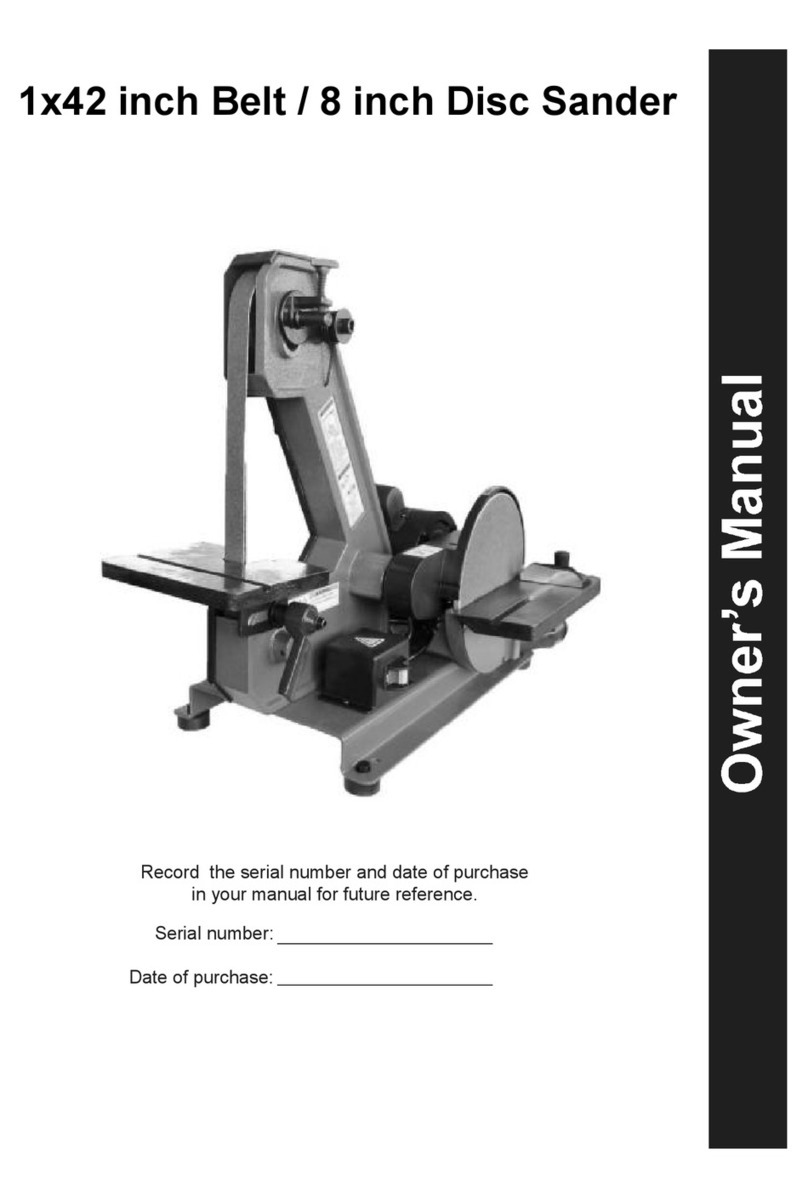
Rikon Power Tools
Rikon Power Tools 50-142 User manual
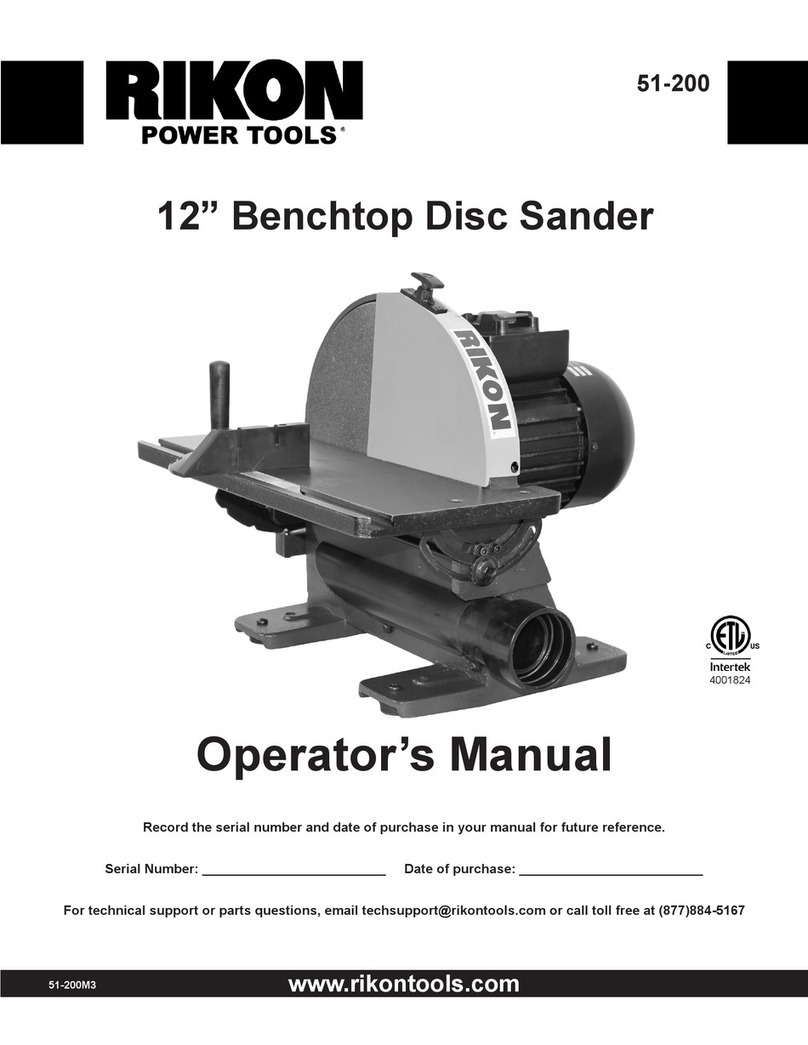
Rikon Power Tools
Rikon Power Tools 51200 User manual
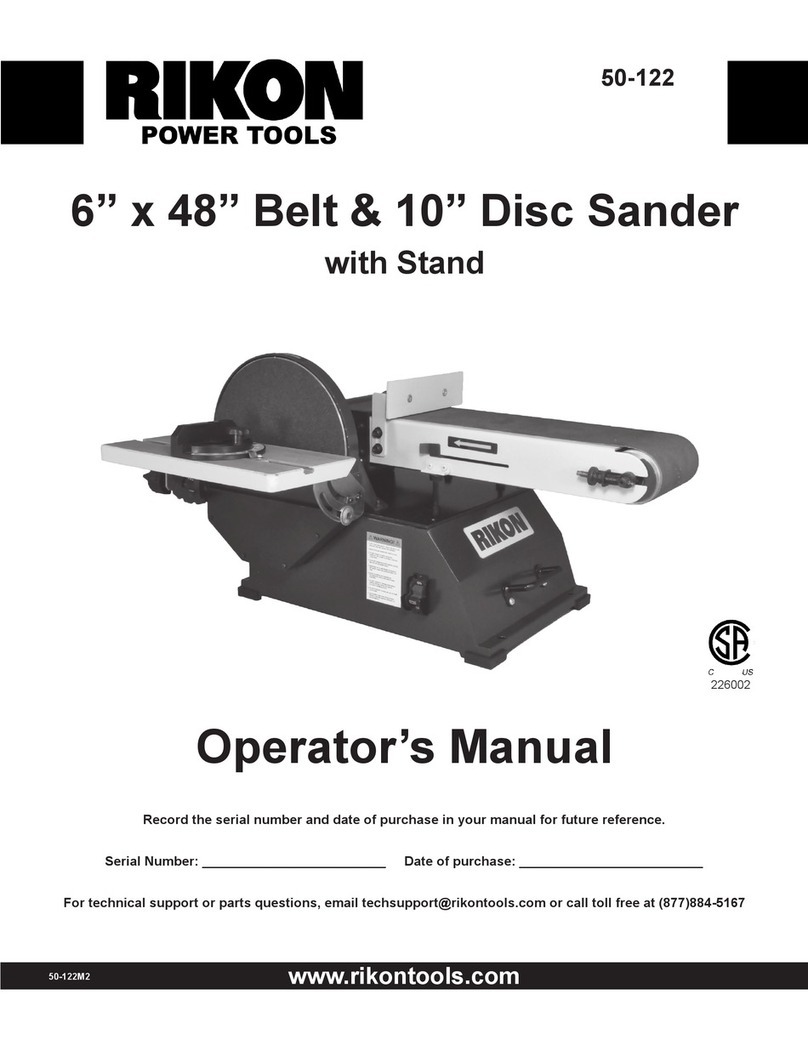
Rikon Power Tools
Rikon Power Tools 50-122 User manual

Rikon Power Tools
Rikon Power Tools 31-200 User manual
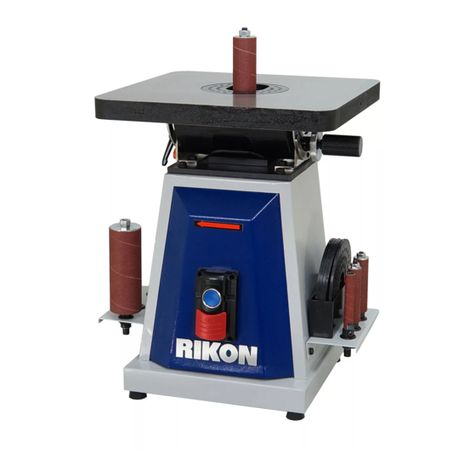
Rikon Power Tools
Rikon Power Tools 50-300 User manual

Rikon Power Tools
Rikon Power Tools 50-142 User manual
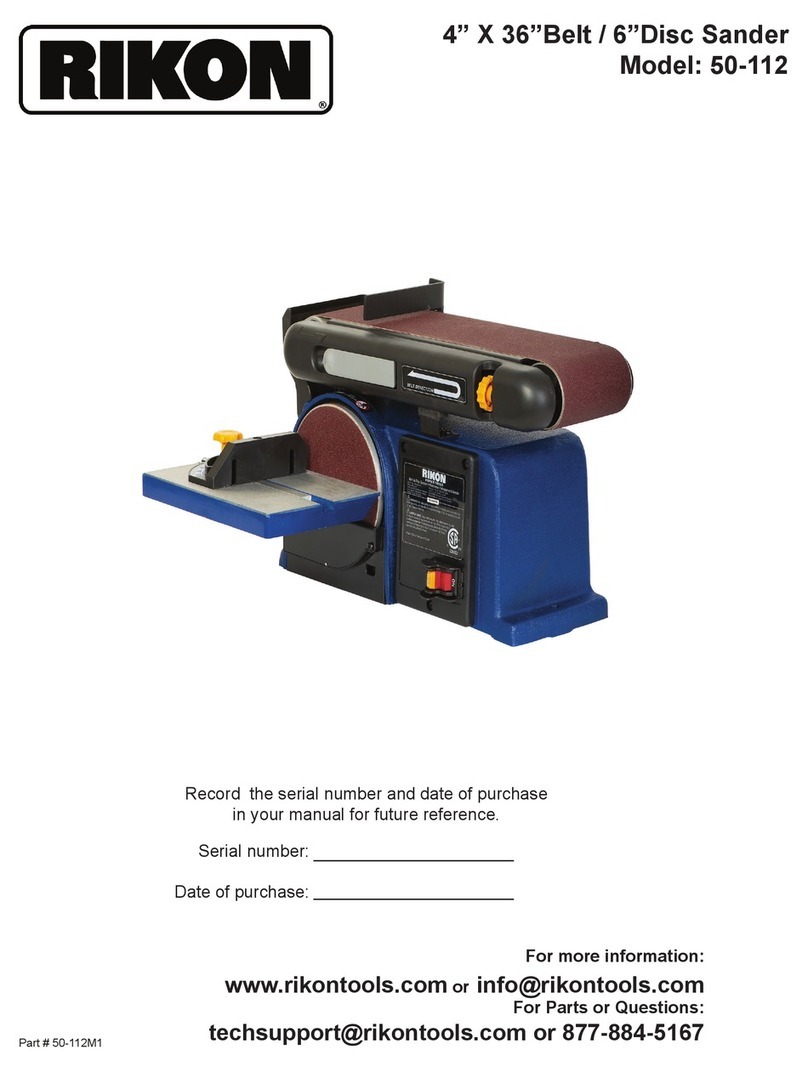
Rikon Power Tools
Rikon Power Tools 50-112 User manual
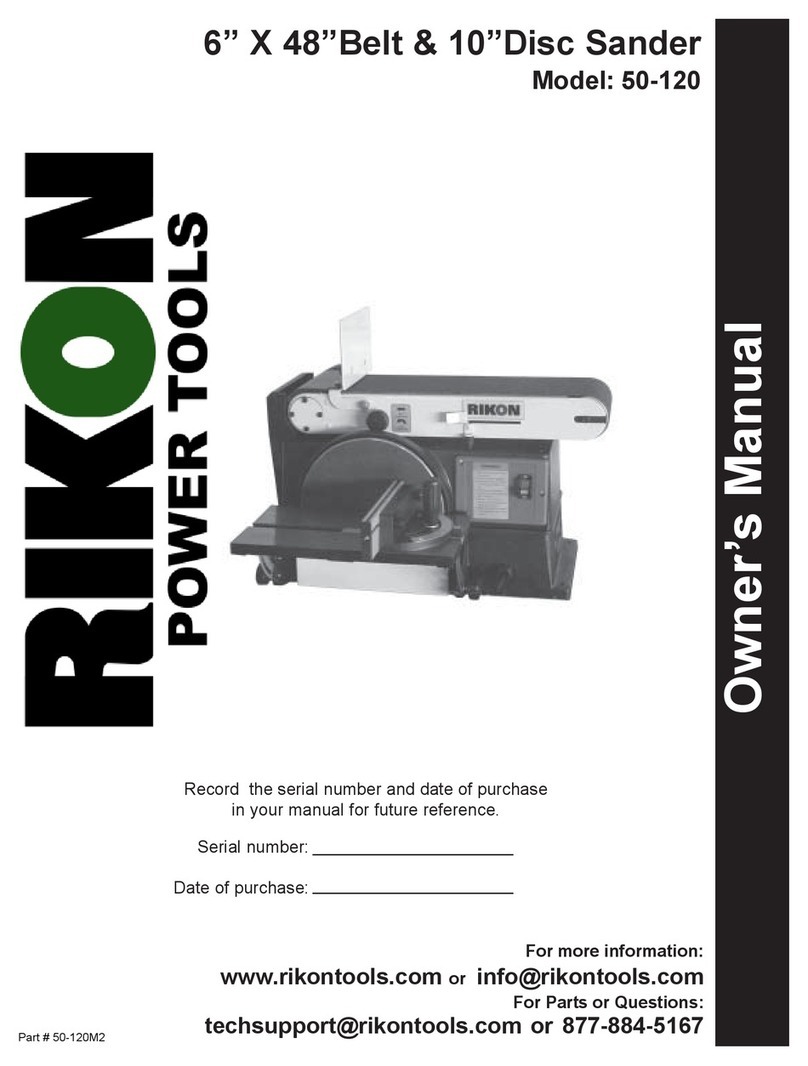
Rikon Power Tools
Rikon Power Tools 50-120 User manual
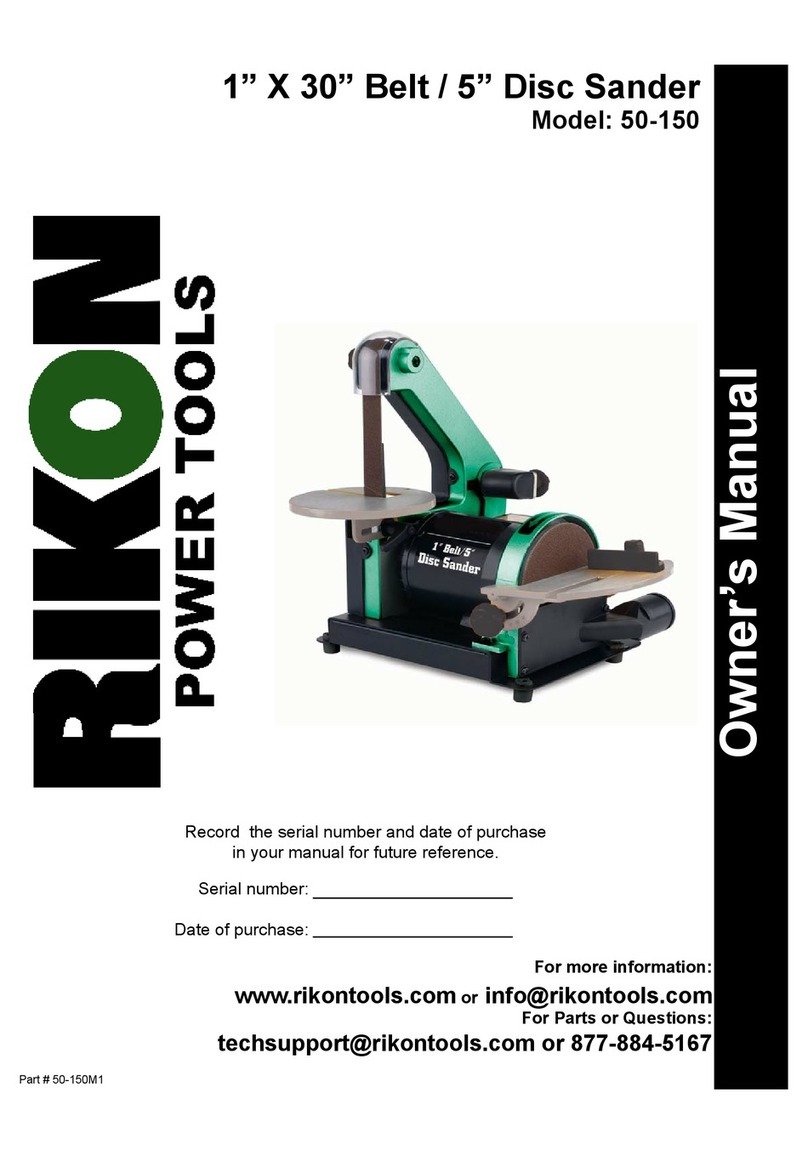
Rikon Power Tools
Rikon Power Tools 50-150 User manual
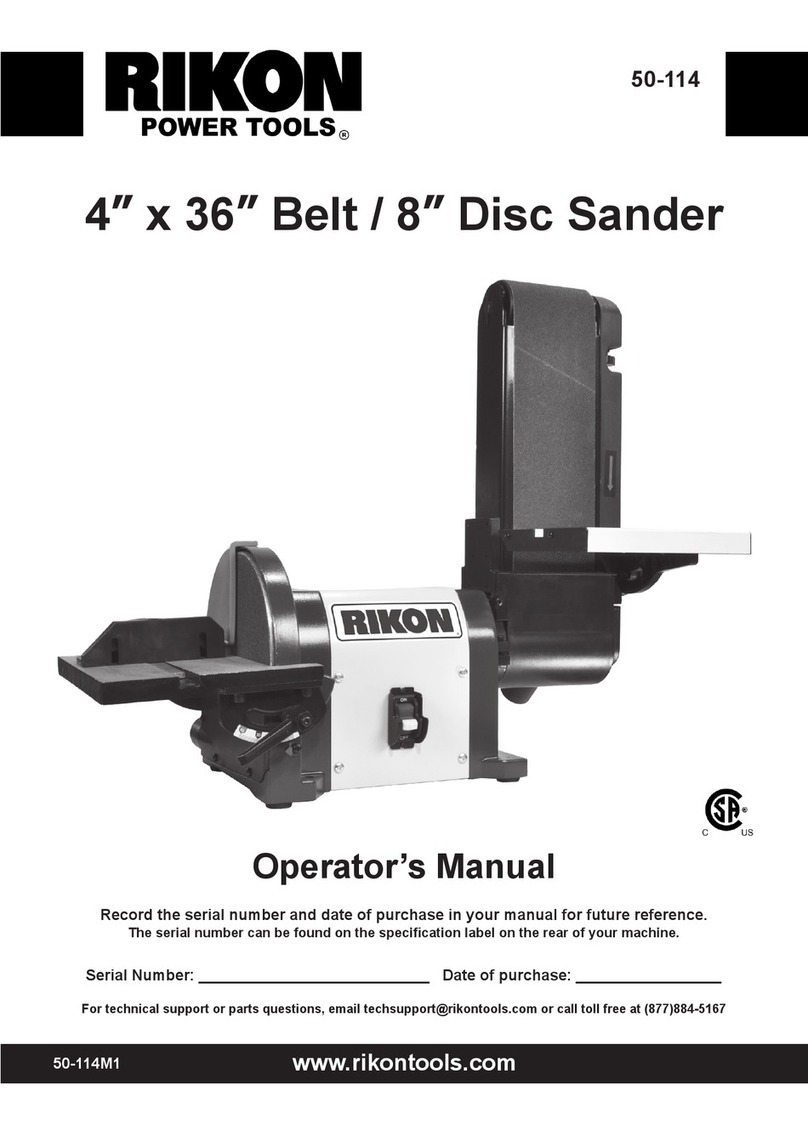
Rikon Power Tools
Rikon Power Tools 50-114 User manual
